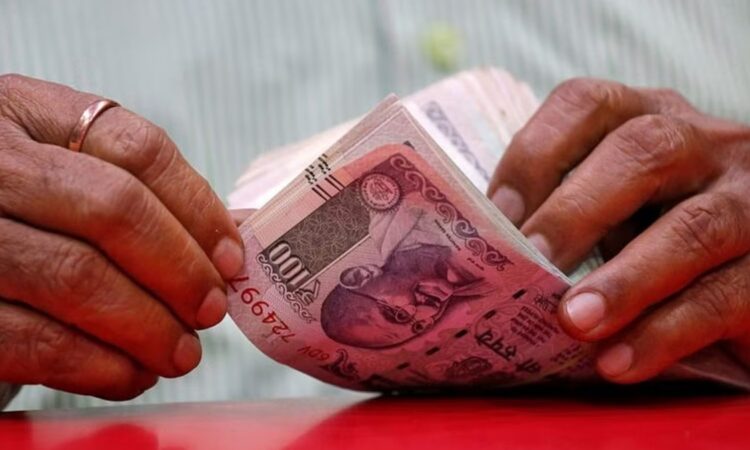The resilient rupee: Impact of macroeconomic developments on Indian currency – Economy News

By Dhruv Goyal
India is experiencing macroeconomic conditions that are truly unprecedented. It shines as a beacon of hope in a slowing global economy. According to the IMF, India will contribute 17% of global growth in CY 2024. Increased tax receipts driven by economic formalisation and strategic reductions in revenue expenditure have led to a period of fiscal consolidation. This has enabled retail inflation to fall to ~3.5%. Further, India’s balance of payments continues to improve on the back of higher services exports, foreign flows and remittances, coupled with lower commodity prices. What implications, if any, will these positive macroeconomic developments have on the Indian rupee?
Over the last 20 years, the Indian currency has held a steady depreciation rate of ~3% on an annual basis. However, upon a closer examination of the INR/USD price chart, it becomes evident that the rupee moved downward sharply (10%+ decline) against the dollar in three concentrated periods; with a more sanguine depreciation of 1-2% annually in other times. In 2012-2013, severe weakness in the Indian economy on the back of high inflation and policy paralysis led to a declining rupee relative to all major currencies. It was exacerbated by the effects of the Fed’s move to reduce its QE program, popularly coined the ‘taper tantrum.’ In 2017-2018, the culprits were spiking oil prices, US-China trade tensions and a widening current account deficit driven by cyclical economic weakness. Third, in 2022 the Fed sharply hiked rates (425 bps) in an attempt to battle COVID-induced inflation – causing the rupee to significantly decline as FPIs fled Indian markets to chase higher-yielding treasuries.
However, 2022 was different (relative to 2013 and 2018) wherein the Indian currency was either stable or outperforming other major currencies like the British pound, euro and Japanese yen. Therefore, the decline was largely a function of a strengthening U.S. dollar: with the Dollar index (DXY) going from ~95 to a peak of ~113. This increase suggests that the Indian currency should have depreciated more than ~10%. Further, the rupee was roughly flat (down ~0.8%) in 2023 when the Fed continued to hike (an additional 100bps). While the RBI cushioned the decline by selling down their dollar reserves (which were reduced by ~$70bn in 2022), it mainly showed the tremendous resilience of India’s economy. Careful management of government finances during COVID, a robust recovery and strong capital account inflows (FDI + FII) contributed to this.
Going forward, we may be entering into a ‘golden period’ for the rupee. Markets have priced in a 25bps reduction in the Fed Funds Rate in September with another ~100bps of cuts over the next 2 years – as evidenced by the 2-year Treasury yield. It will be interesting to see whether the RBI initiates its own rate reduction cycle (per market expectations in December) on the back of positive inflation data. However, the RBI will have to consider a rate cut’s negative impact on banking deposits, which have been growing slowly relative to credit growth. In any case, the higher interest rate differential between the Fed Funds and RBI Repo Rate will be positive for the rupee. However, it is important to note that this story is somewhat complicated by potential global recessionary fears (~35% probability according to JPM) which could cause foreign investors to look for safer havens.
Also read: Rate of rupee depreciation coming down: Goyal
Beyond the favourable rates and macroeconomic outlook, the rupee will also benefit from India’s energy transition and gradual reduction in carbon intensity. According to a UN report, India’s emissions grew at only 4% between 2005 and 2019 while the GDP grew at ~7% in that period. Consequently, there was a ~33% reduction in India’s emission intensity. Going forward, the government has laid out a vision for a 45% reduction by the end of this decade, when compared to the 2005 level. These changes will primarily be driven by substantial investment in renewable energy generation capacity coupled with the electrification of transportation via the flagship FAME scheme. Importantly, this will combine to reduce India’s net oil import bill (as a % of GDP) – which has historically been a drag on India’s currency.
On the whole, demand for the rupee will remain strong as India grows in importance as a key investment destination for foreign portfolios. Further, the RBI’s Forex reserves (now $680bn+) offer an important buffer to the currency. These factors have begun presenting themselves in INR/USD currency markets with record-low FX volatility translating into decade-low hedging costs.
(The author is CEO, FourLion Capital and alumnus of Harvard Business School. Views expressed are the author’s own and not necessarily those of financialexpress.com.)





